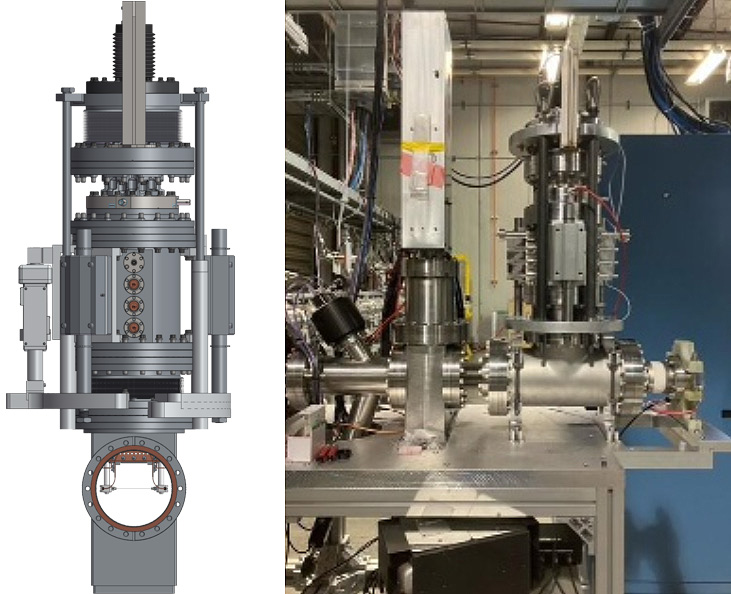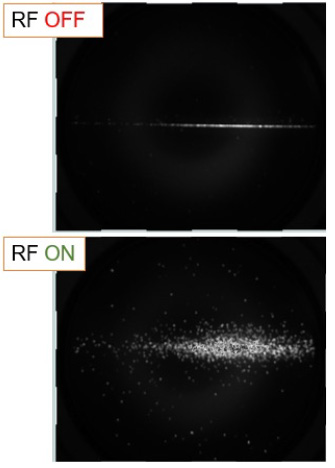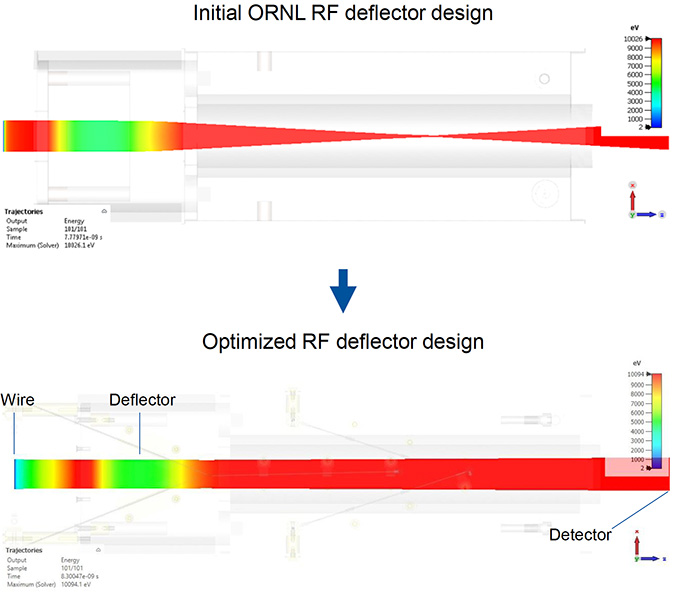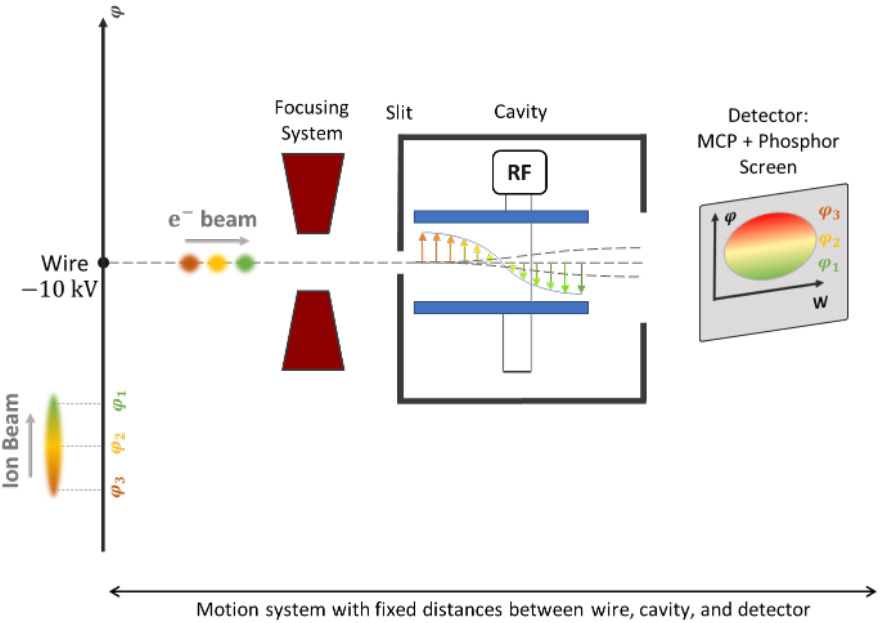Conventional BSMs suffer from poor electron collection and are limited to one-dimensional measurements. RadiaBeam has developed a new generation BSM, proven to overcome these limitations and deliver high-resolution, high-efficiency measurements for today’s most demanding beamlines.
We will custom-build a BSM to match your RF frequency, phase resolution, and operating environment – including support for measurements along longitudinal, transverse, or combined dimensions. RadiaBeam’s multi-dimensional BSM is currently in operation at the Spallation Neutron Source (SNS) at Oak Ridge National Laboratory (ORNL).
IT ALL BEGAN AT ORNL’S SPALLATION NEUTRON SOURCE
The Spallation Neutron Source at ORNL, the world’s most powerful accelerator-based neutron source, called on RadiaBeam to develop a next-generation, multi-dimensional BSM for its Beam Test Facility, where high-intensity beam experiments are conducted.

At left, the BSM chamber as modeled. At right, the BSM installed into the SNS Beamline.
SETTING A NEW STANDARD
RadiaBeam’s BSM sets a new standard for measuring and diagnosing longitudinal beam parameters in proton and ion accelerators, serving applications in research, medicine, industry, nuclear energy, and materials irradiation.
MAJOR INNOVATIONS IN FOCUSING, DEFLECTOR DESIGN, AND WIRE TRANSLATION
RadiaBeam BSM achieves unprecedented performance by incorporating three major innovations, measuring the bunch shape without appreciably affecting the beam.

Tunable beam focusing innovation improves collection efficiency (2.9x gain compared to existing BSM models)

RF deflector design improves beam linearity (40% improvement by adding a focusing system)

Translation mechanism enables transverse beam profile scanning and measurement
Focusing system: 2.9X efficiency
Our focusing demonstrated excellent vertical focusing and more than double the electron collection efficiency.

Above: Figure shows secondary electrons emitted from the wire on the detector screen with RF deflection off and on.
New RF Deflector design
Our RF deflector improves horizontal mapping from the wire to the detector for a 40% improvement in beam linearity.

IT COMES DOWN TO THE WIRE: PRINCIPLE OF OPERATION
The ion beam passes through a tungsten wire biased at -10 kV producing a secondary electron beam with an equivalent bunch’s temporal profile. These electrons are accelerated towards the input slit (anode) and focused by an electrostatic focusing system. Then, an RF deflector with a superimposed electric potential is used to focus, steer, and deflect the electrons. Hence, the temporal distribution is converted into a spatial distribution via the RF deflecting field. This distribution is captured by a microchannel plate (MCP) with a phosphor screen and imaged by a camera, enabling single-shot reconstruction of the bunch shape and significantly improving measurement speed.

LET US DESIGN AND BUILD A BSM TO YOUR NEEDS
Whether your system runs below or beyond 402.5 MHz —we’ll design a BSM to meet your exact specifications. Our approach delivers optimized resolution through precision focusing, enhanced beam deflection, and tunable components. Need to operate in high-radiation environments? We offer alternatives to camera-based systems, such as 1-dimensional solutions with electron multiplier or microchannel plate (MCP) detectors—maintaining performance where cameras can’t.
Let us tailor a BSM to match your beam energy, bunch characteristics, operating frequency, resolution requirements, and environmental conditions.

APPLICATIONS AND KEY PARAMETERS
The RadiaBeam Bunch Shape Monitor can be used to measure longitudinal and transverse beam distribution in:
- Proton and ion accelerators
- Industrial and medical accelerators
- PET isotope production
- Ion therapy
- Nuclear energy
- Materials irradiation
Sample parameters:
Below are the key parameters for RadiaBeam’s BSM designed for SNS
- 2.5 MeV H- ion beam
- Operating frequency 402.5 MHz
- Beam length 10°
- Phase resolution < 1°
- Time resolution <7 ps
- Spatial resolution 0.5 mm
Other operating frequencies can be supported, to fit your needs. Contact us.
This product was developed under SBIR Grant DE-SC0020590 and may be available for sole-source procurement when using Federal funds.

